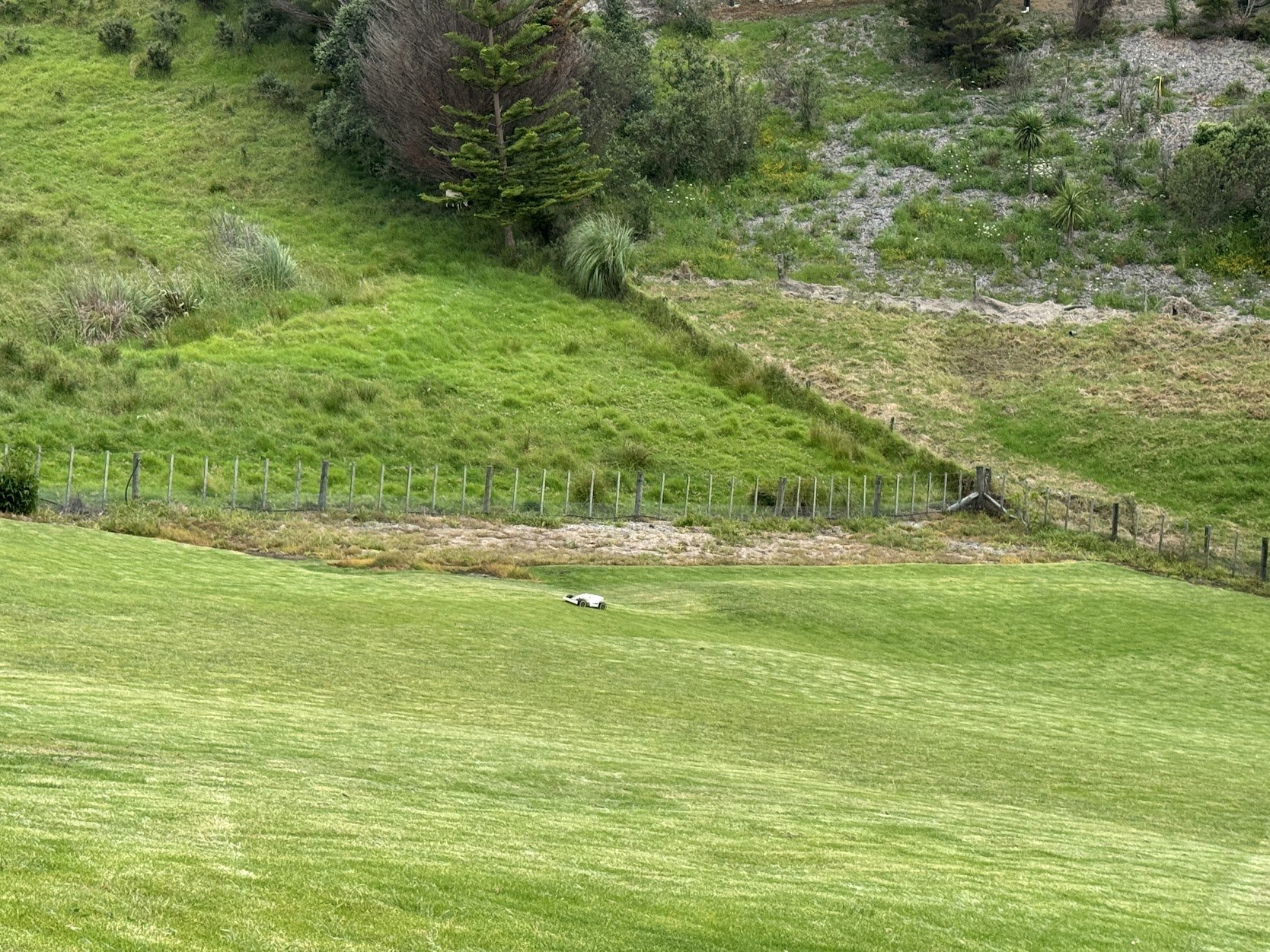Where’s Robbie? Are we giving up on our robot lawnmower?
To be fair, Robbie can be pretty hard to spot.
Mark put up a post in our local Facebook group recently that sparked some concern for Robbie, our robot lawnmower.
His post asked for assistance with lawn care, specifically looking for someone to scarify our mainly kikuyu lawn. A few minutes after he asked the question, I got a message asking what happened to Robbie.
Where is Robbie?
We’re big fans of our robot lawnmower, Robbie, who handles our steep 3,300 metre square section. It’s so satisfying to see the tidy cross hatch pattern reappear on the grass after his weekly mow. Robbie isn’t losing his job any time soon. But the warm, humid conditions this summer have seen a lot of lawn growth. Poor Robbie has been working nights and weekends to keep on top of it. The Kikuyu is spongy, making it difficult for the wheels to get traction.
Mark, drawing on both his knowledge from his previous life as a groundskeeper, and the wisdom of the internet (thanks @timthelawnmowerman), concluded that our lawn needed to be scarified.
What is scarification?
Scarification is the process of removing a layer of dead grass and debris, also known as thatch, from a lawn. While a small amount of thatch can be beneficial, acting as a mulch to retain moisture, too much thatch is not good for your lawn. In our case, there’s at least 10cm of debris between the top of the lawn and the ground. Great for roly polys, not great for law care.
Why does grass need to be scarified?
The primary reason for scarifying a lawn is to manage the thatch layer. Excessive thatch can lead to several problems:
Water and Air Circulation: Thick thatch acts as a barrier, meaning that water runs off instead of soaking into the soil and reaching the roots. It also stops airflow and nutrient absorption, making the lawn more susceptible to drought and other stresses.
Pest and Disease Habitat: A dense thatch layer provides a habitat for pests and can create conditions favorable for lawn diseases.
Uneven Lawn Surface: Over time, a thick layer of thatch can lead to an uneven lawn surface, affecting its appearance and usability. Since the appearance of our lawn has been responsible for about 30% of Mark’s overall happiness lately, this is quite an important consideration.
With Kikuyu grass, which grows quickly and tends to produce a lot of thatch, regular scarification is particularly important to maintain its health and appearance.
Mark was surprised to find that neither the local lawn care companies he contacted, like Green Acres or Jims Mowing, or the equipment hire companies seemed to be familiar with the process. They didn’t offer scarifying equipment or services, so he’s come up with another solution.
How we’re approaching the scarification process
Surprise, surprise – the solution involves a new piece of tech. We’ve ordered a scarifier we’ll be able to use as often as necessary, likely twice a year. The best time to scarify your lawn is during the growing season, typically in early spring or early autumn so that the lawn recovers quickly. For kikuyu lawns, due to their rapid growth and thatch production, it needs to be done more often.
The first time will be an experiment. I’ll be sure to share what we learn from the process.
In the meantime, I’m emotionally preparing Mark to live with an ugly lawn for a while as it recovers from scarification. Wish me luck.

